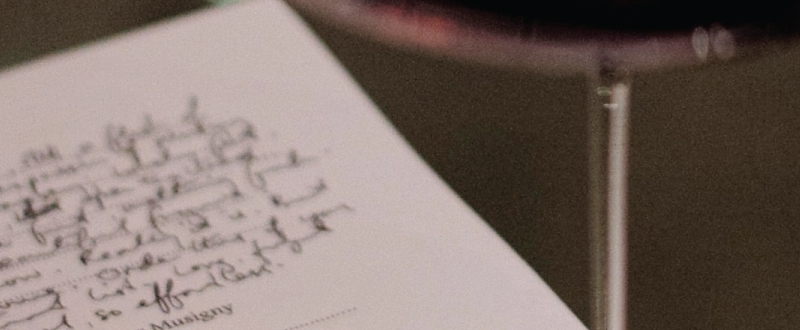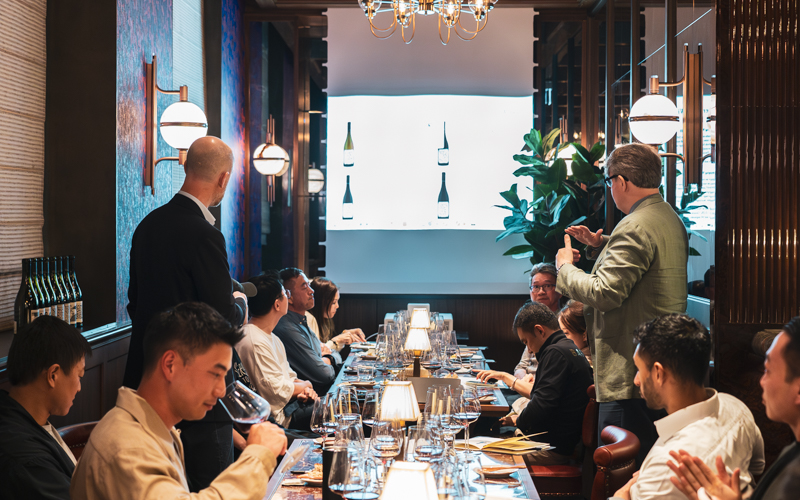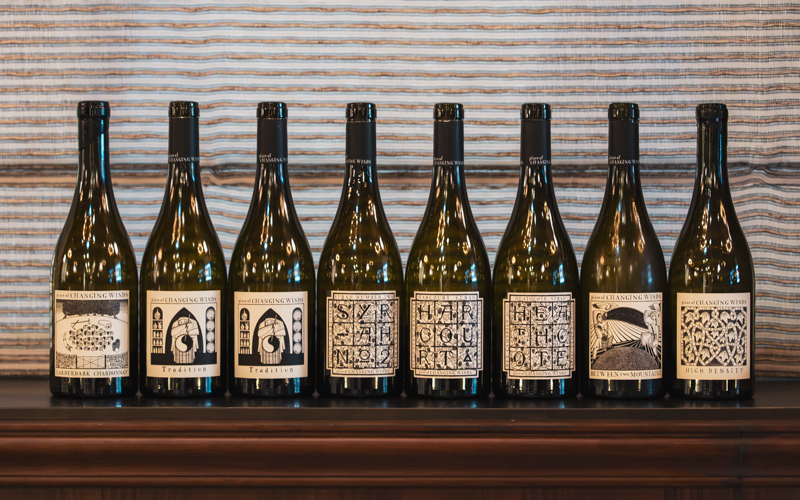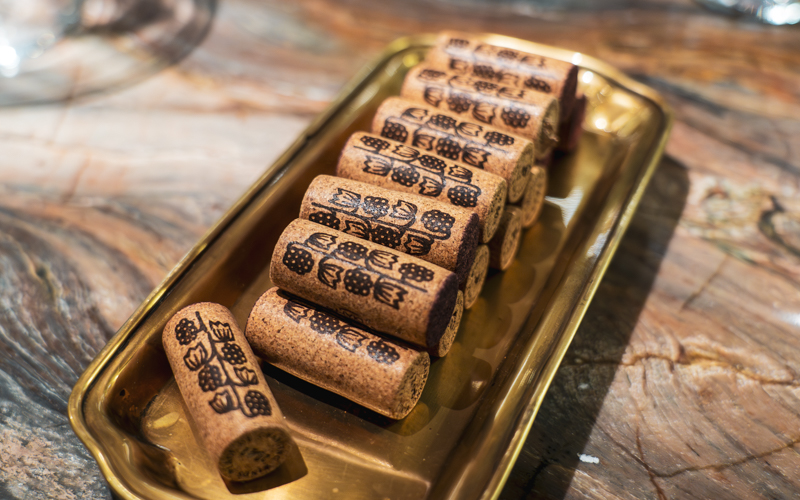






The state of Victoria is an interesting one for the wine enthusiast. Many of Australia’s halo wines come from South Australia – Penfold’s Grange being the most iconic. These are wines of complexity and balance, but also enormous power. And behind them pushes out into the world a commercial tour de force in large-scaled mainstream wine production, marketing and distribution in that fruit-laden style. Victoria’s fine wine contributions in contrast have been discreet, small-scaled, often developed by pioneers considered eccentric in their day. I’m thinking of people like Carrodus Bailey and his Yarra Valley Yarra Yering No.1 and No.2 wines in the 1970s, and Phillip Jones’ Gippsland Bass Phillip Pinot Noirs in the 1980s. Trailblazers.
While no one can predict the future, with Robert Walter’s Place of Changing Winds it feels to me like we have the ingredients for an interesting new chapter in the Victorian wine story.
My own interest was piqued in the best way possible – a glass of wine handed to me to taste blind in June by my colleague Florian. The pressure was on as my colleague Kai was filming this for an IG post – you can see part 1 here, and part 2 here.
The wine was 2022 Place of Changing Winds Harcourt Syrah from Mount Macedon in central Victoria. I got the variety right, but the cooler fruit expression, fresh, with notes of cracked pepper, and even a granitic soil signature put me in the Northern Rhône – St Joseph maybe.
Fast forward three months, and I had the chance to host a dinner with the owner, Robert Walters, at Club Bâtard, to try a fuller range of his wines.
Here are the key take aways on what’s distinctive here.
Walters, who has spent the past twenty years importing family-scale domaine wines from the best spots in Europe, had come to view much of Australia’s wine as a bit samey – warm climate, farmed the same way, made the same way. The wines seemed a world away from what he was importing and he wondered if something to compete for style and quality might be possible in Victoria. This led him to a very cool site in Mount Macedon, at 500m elevation, surrounded by forest. It’s already fairly cool, but cool air rolls in from the forest, and the diurnal range is dramatic – a 30°C day could lead to an 8°C night – extending the natural ripening period, delivering fresher, more complex wines (we are talking harvests well into April – the equivalent of well into October in the northern hemisphere). Compounding this decision is perhaps the most dramatic of all: the idea – gained from his friend Olivier Lamy (of Domaine Hubert Lamy St Aubin), to plant his vineyards to super high density (as Lamy himself has long now practiced for certain plots). Here things start at what is usually considered high density – 12,000 and 14,000 vines per hectare, but there are also plots at 20k, 25k and 33k / ha. Vine competition pushes the root system deep, and inhibits yield, and it can be argued that it can lead to more expression in the fruit, including expression of place / terroir. It also comes at a much higher cost in labour – every vine needs a pair of hands many times per year.
And the wines themselves?
The key words I’d use here are freshness, elegance, expression, and intensity. There are ways to deliver those first three, but to also delivery mid-palate intensity and length of finish requires a very high quality of raw materials. It can only be achieved in the vineyard.
At the base of the range sit two single vineyard syrahs, and below that a blended syrah, from nearby contract sites, managed to Place of Changing Winds’ requirements. Harcourt Syrah come from Mt Alexander, an hour’s drive further north from PoCW. I found the 2022 offers a red and blue fruit spectrum syrah, with white pepper, fine minerality (granite soils), and roses on the finish (there’s 50% whole bunch here), and no sense of wood really (large old Stockinger casks are employed). The Heathcote Syrah from 2021 from an east-facing red Cambrian soil site in the Mt Camel Range is a little fuller, with fresh plum and dark cherry, with lots of florals on the finish, it’s fleshy, lush and full, but very fresh-fruited in style still (and just 13% abv). The entry level 2022 Syrah No.2 is a blend of lots from Heathcote (66%) and Harcourt (34%) that offers an accessible juicy ripe syrah, a good wine with varietal blackberry fruit and a little cracked pepper.
There’s a very interesting blend of syrah (60%) and pinot noir (40%) called Tradition Red - the tradition in this case paying homage to one of Australia’s greatest winemakers Maurice O’Shea who created wines well ahead of their time in the ‘40s and ‘50s in Australia. The 2022 is an elegant wine, the red-fruited juiciness and sapidity of the estate-grown pinot coming through. Tradition White is already one I’ll be looking to follow personally. The 2022 combines one third estate chardonnay with two thirds Marsanne and Roussanne, and offers some of the glycerin texture and fullness we might expect from the latter, with brightness and cut of the former, and it has the citrus, hazelnut and toast aromas that point to high class, slightly reductive winemaking (500L casks, wine globes, and neutral barriques used).
All the wines I’ve mentioned so far are available from The Fine Wine Experience as Place of Changing Winds importers to Hong Kong, and are in stock now. That’s the good news! The keep-an-eye-on-the-future news is that they also so far released only tiny quantities of small production Chardonnay and Pinot Noir from the estate. These are made in genuinely tiny amounts from the small estate (3.1ha), and tiny yields. Walters brought with him in his suitcase for the dinner a 2022 'Larderdark' Chardonnay (10hl/ha) that pulled off the impossible combination of palate-coating richness of fruit and extract, intensity, and a notable (only) 12.8% abv. Also unavailable, 2022 'Between Two Mountains' Pinot Noir offers red fruit, including red cherry, raw veal, brightness, sweet polished tannins, and an alluring muskiness in an elegant but long package.
It's still early days at Place of Changing Winds. The first commercial release was from the 2019 vintage. There’s dedication here to making something really special, wines with a sense of place (Place of Changing Winds translates an ancient local name for the location – Warekila). The soils, cool climatic conditions, high density farming are all going to play a major part. But so too is Robert Walters’ long experience with many of the most interesting wines and wine minds in the world. There are impressive people engaged in this project, and its clear that there is both curiosity and rigour brought to it. That’s what trailblazers do.
Try the wines, tuck some away, and let’s see what the next chapter brings.
